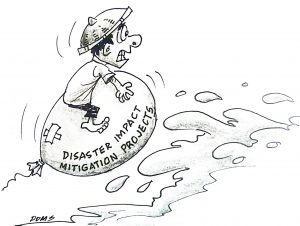In a country where typhoons, earthquakes, and other natural calamities occur frequently, only the most resilient structures can safeguard lives and properties. Anything less than strict adherence to high construction standards and thorough inspections risks leaving communities vulnerable in times of crisis. Astringent monitoring and quality checks on disaster-mitigation infrastructure projects must be imposed.
Historically, some infrastructure projects meant to withstand natural disasters have failed to do so, often due to corruption, oversight, or poor-quality materials. Structures that should have offered protection instead became sources of additional risk, sometimes collapsing or eroding under pressure. This pattern reveals an urgent need to ensure that every detail, from design to implementation, is held to the highest standard, without compromise. The consequences of neglect in these areas are too severe to allow lapses in quality and safety standards.
Quality assurance alone, however, is insufficient without consistent and independent monitoring. By involving external, impartial inspectors who are well-versed in disaster-resilient construction, projects can better adhere to established safety guidelines. Regular assessments should be mandatory throughout all project phases, not only at the beginning and end. This level of scrutiny, while seemingly tedious, is essential in identifying any corner-cutting practices that might otherwise go unnoticed until it’s too late.
Additionally, the use of high-grade materials specifically designed for resistance against extreme weather is non-negotiable. While opting for cheaper alternatives may reduce costs in the short term, such decisions compromise the overall durability and efficacy of the project. For example, employing substandard steel or concrete in areas prone to high winds and earthquakes can have catastrophic effects. Investing in the right materials and methods may seem costly upfront but is a necessary expense to prevent disasters down the line.
The only way forward is through a commitment to transparency, accountability, and top-tier quality. Government agencies responsible for public safety must prioritize funding for these standards and penalize those who fail to meet them. By enacting strict policies and enforcing them without exception, the nation can build a robust network of infrastructure capable of offering true protection in the face of future calamities.




